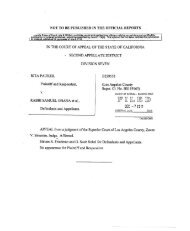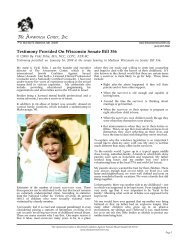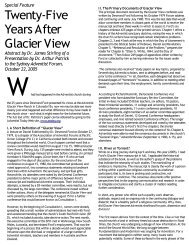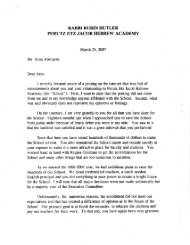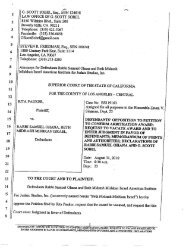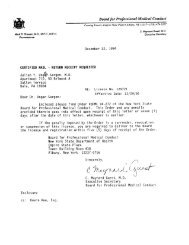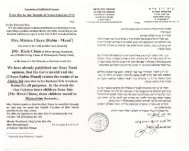Here's a pdf of the Pellicano trial memo - Luke Ford
Here's a pdf of the Pellicano trial memo - Luke Ford
Here's a pdf of the Pellicano trial memo - Luke Ford
Create successful ePaper yourself
Turn your PDF publications into a flip-book with our unique Google optimized e-Paper software.
Case 2:05-cr-01046-DSF Document 1215 Filed 02/28/2008 Page 42 <strong>of</strong> 129<br />
1<br />
2<br />
d. Pro<strong>of</strong> <strong>of</strong> Loss Not Required<br />
Undisclosed, biased decision making for personal gain,<br />
3 whe<strong>the</strong>r or not tangible loss to <strong>the</strong> public is shown, constitutes<br />
4 a deprivation <strong>of</strong> honest services. United States v. Sawyer, 85<br />
5 F.3d 713, 724 (1st Cir. 1996)(“Sawyer I”); see also Sawyer II,<br />
6 239 F.3d at 39; United States v. Lopez-Lukis, 102 F.3d 1164, 1169<br />
7 (11th Cir. 1997).<br />
8<br />
9<br />
10<br />
11<br />
12<br />
13<br />
14<br />
15<br />
16<br />
17<br />
18<br />
19<br />
20<br />
21<br />
22<br />
23<br />
24<br />
25<br />
26<br />
e. Fraudulent Intent<br />
The intent to deprive <strong>the</strong> public <strong>of</strong> its right to <strong>the</strong> honest<br />
services <strong>of</strong> <strong>the</strong> government <strong>of</strong>ficial is an essential element <strong>of</strong><br />
<strong>the</strong> <strong>of</strong>fense. See Ninth Circuit Model Criminal Jury Instruction<br />
8.102; Frega, 179 F.3d at 803. In establishing <strong>the</strong> requisite<br />
intent, <strong>the</strong> government need not prove <strong>the</strong> defendant had <strong>the</strong><br />
specific intent to use <strong>the</strong> mails or wires to commit <strong>the</strong> fraud.<br />
If a defendant “does an act with knowledge that use <strong>of</strong> <strong>the</strong> mails<br />
[or wires] will follow in <strong>the</strong> ordinary course <strong>of</strong> business, or<br />
where such use can reasonably be foreseen, even though not<br />
actually intended, <strong>the</strong>n he ‘causes’ <strong>the</strong> mails to be used.” See<br />
United States v. Hubbard, 96 F.3d 1227, 1229 (9th Cir. 1996)<br />
(quoting Pereira v. United States, 347 U.S. 1, 8-9 (1954)). See<br />
also United States v. Bernhardt, 840 F.2d 1441, 1447 (9th Cir.<br />
1988).<br />
Fraudulent intent may be, and <strong>of</strong>ten must be, shown by<br />
circumstantial evidence. See United States v. Rasheed, 663 F.2d<br />
843, 848 (9th Cir. 1981); United States v. Jones, 425 F.2d 1048,<br />
1058 (9th Cir. 1979). Due to <strong>the</strong> difficulty in proving intent,<br />
27<br />
28 -15-



